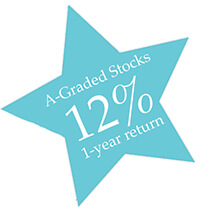Canada’s Best Dividend Stocks 2018
Our Dividend All-Stars gained 16% on average last year. Check out this year's crop
Advertisement
Our Dividend All-Stars gained 16% on average last year. Check out this year's crop
 More recently, the A-graded stocks gained an average of 12% since last year’s update. In an unusual, but by no means unique turn of affairs, the larger group of A-and-B-graded stocks fared better with gains of 16% on average. Both handily beat the S&P/TSX Composite ETF (XIC), which advanced 5% over the same period.
(The returns above assume dividend reinvestment when the list was updated each year. They do not include commissions, taxes, or similar frictions.)
We’re happy with the results and they help to emphasize market research that has extolled the virtues of dividend stocks for a long time. For instance, Dartmouth professor Kenneth French studied stock picking strategies globally and his numbers demonstrate that dividend stocks have fared particularly well in Canada.
More recently, the A-graded stocks gained an average of 12% since last year’s update. In an unusual, but by no means unique turn of affairs, the larger group of A-and-B-graded stocks fared better with gains of 16% on average. Both handily beat the S&P/TSX Composite ETF (XIC), which advanced 5% over the same period.
(The returns above assume dividend reinvestment when the list was updated each year. They do not include commissions, taxes, or similar frictions.)
We’re happy with the results and they help to emphasize market research that has extolled the virtues of dividend stocks for a long time. For instance, Dartmouth professor Kenneth French studied stock picking strategies globally and his numbers demonstrate that dividend stocks have fared particularly well in Canada.
The state of dividend stocksIn one study, Professor French sorted Canadian stocks by dividend yield at the end of December and put them into three portfolios. The first portfolio held the 30% of stocks with the highest yields and the second contained the 30% of stocks with the lowest yields. The final portfolio tracked stocks that didn’t pay dividends. The portfolios were followed for a year and then the process was repeated. The accompanying figure shows the growth of each portfolio along with that of the Canadian stock market. The high-yield stocks outperformed the market by an average of 4.1 percentage points a year from 1977 through to the end of 2016, which really adds up. The low-yield group underperformed by 0.7 of a percentage point annually over the same period.
Sign up for our free investing newsletter »
Stocks with the best prospects are awarded As and solid candidates get Bs. We think both are worthy of your consideration. Middle of the road options get Cs, while those in need of improvement get Ds or Fs. A select group of seven of stocks managed to earn As this year, while 15 picked up solid Bs.Share this article Share on Facebook Share on Twitter Share on Linkedin Share on Reddit Share on Email